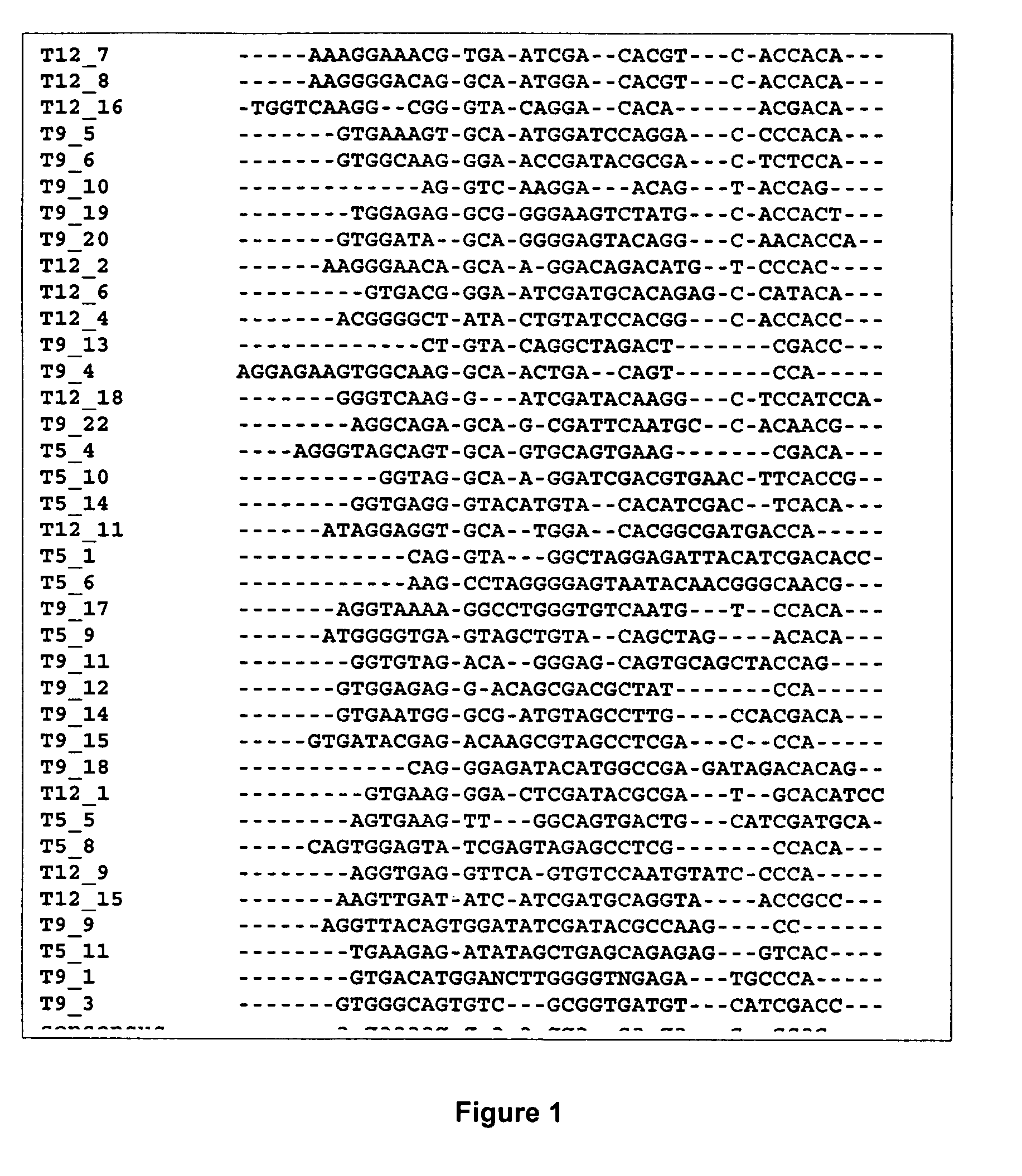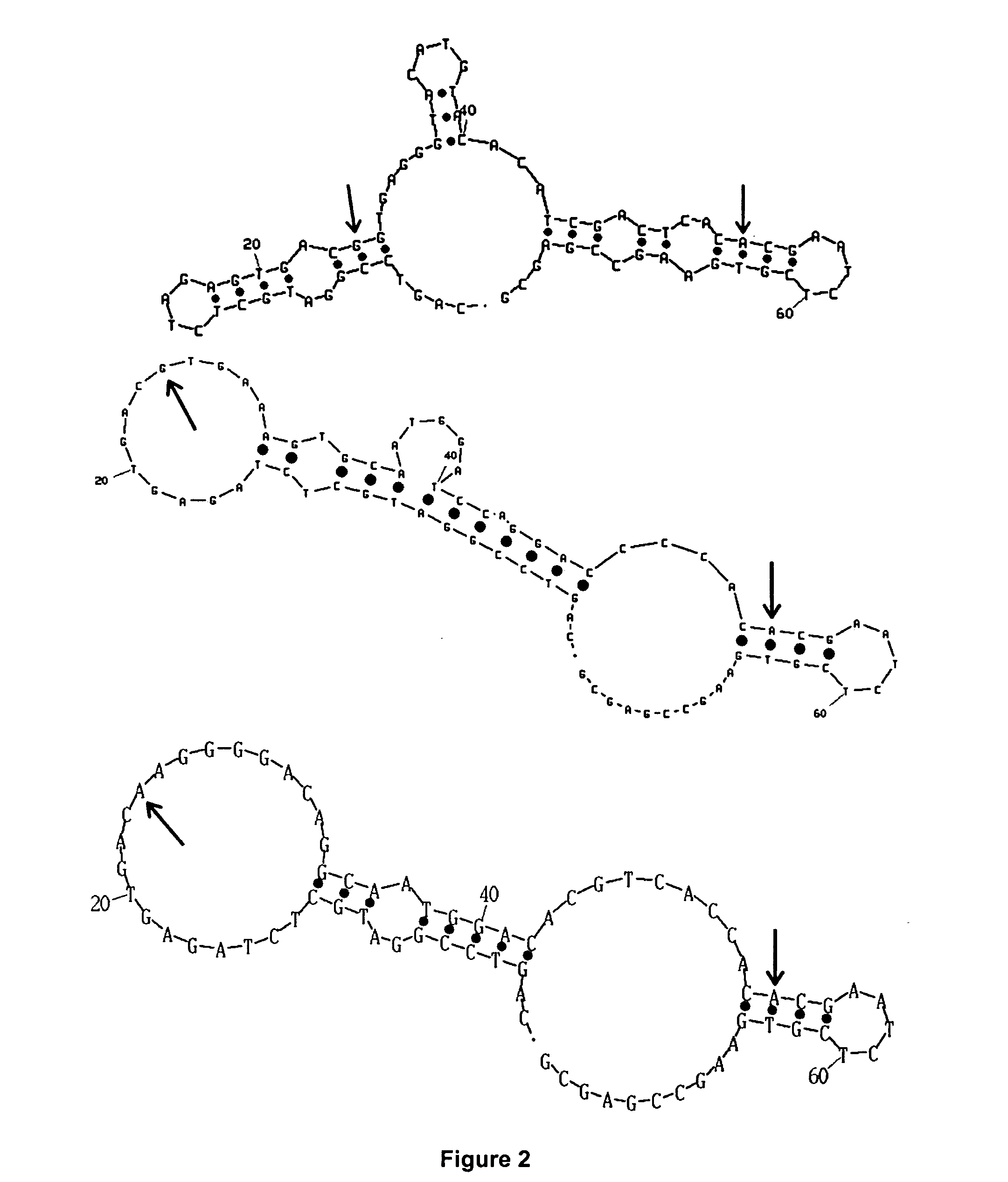Combinatorial selection of phosphorothioate single-stranded DNA aptamers for TGF-beta-1 protein
a technology of phosphorothioate and dna aptamers, which is applied in the field of thioaptam, can solve the problems of not providing the specificity, half-life and lack of (or reducing) immunogenicity necessary for modulation of tgf- signaling, and reducing the activity of tgf-, so as to reduce scarring and reduce the activity of tgf-. , the effect of reducing the activity o
- Summary
- Abstract
- Description
- Claims
- Application Information
AI Technical Summary
Benefits of technology
Problems solved by technology
Method used
Image
Examples
example 1
[0082] S-ODN, S2-ODN and monothio-RNA Split and Pool Synthesis. A split and pool synthesis combinatorial chemistry method was developed for creating combinatorial S-ODN, S2-ODN and monothio-RNA libraries (and readily extended to unmodified ODNs-whether single strand or duplex). In this procedure each unique member of the combinatorial library was attached to a separate support bead. Targets that bind tightly to only a few of the potentially millions of different support beads can be selected by binding the targets to the beads and then identifying which beads have bound target by staining and imaging techniques. The methodology of the present invention allowed the rapid screening and identification of thioaptamers that bind to proteins such as NF-κB using a novel PCR-based identification tag of the selected bead.
[0083] The dA, dG, dC and dT phosphoramidites were purchased from Applied Biosystems (Palo Alto, Calif.) or Glen Research (Sterling, Va.). The Beaucage reagent (3H-1,2-Benz...
PUM
| Property | Measurement | Unit |
|---|---|---|
| volume | aaaaa | aaaaa |
| pH | aaaaa | aaaaa |
| pore size | aaaaa | aaaaa |
Abstract
Description
Claims
Application Information
 Login to View More
Login to View More - R&D
- Intellectual Property
- Life Sciences
- Materials
- Tech Scout
- Unparalleled Data Quality
- Higher Quality Content
- 60% Fewer Hallucinations
Browse by: Latest US Patents, China's latest patents, Technical Efficacy Thesaurus, Application Domain, Technology Topic, Popular Technical Reports.
© 2025 PatSnap. All rights reserved.Legal|Privacy policy|Modern Slavery Act Transparency Statement|Sitemap|About US| Contact US: help@patsnap.com



